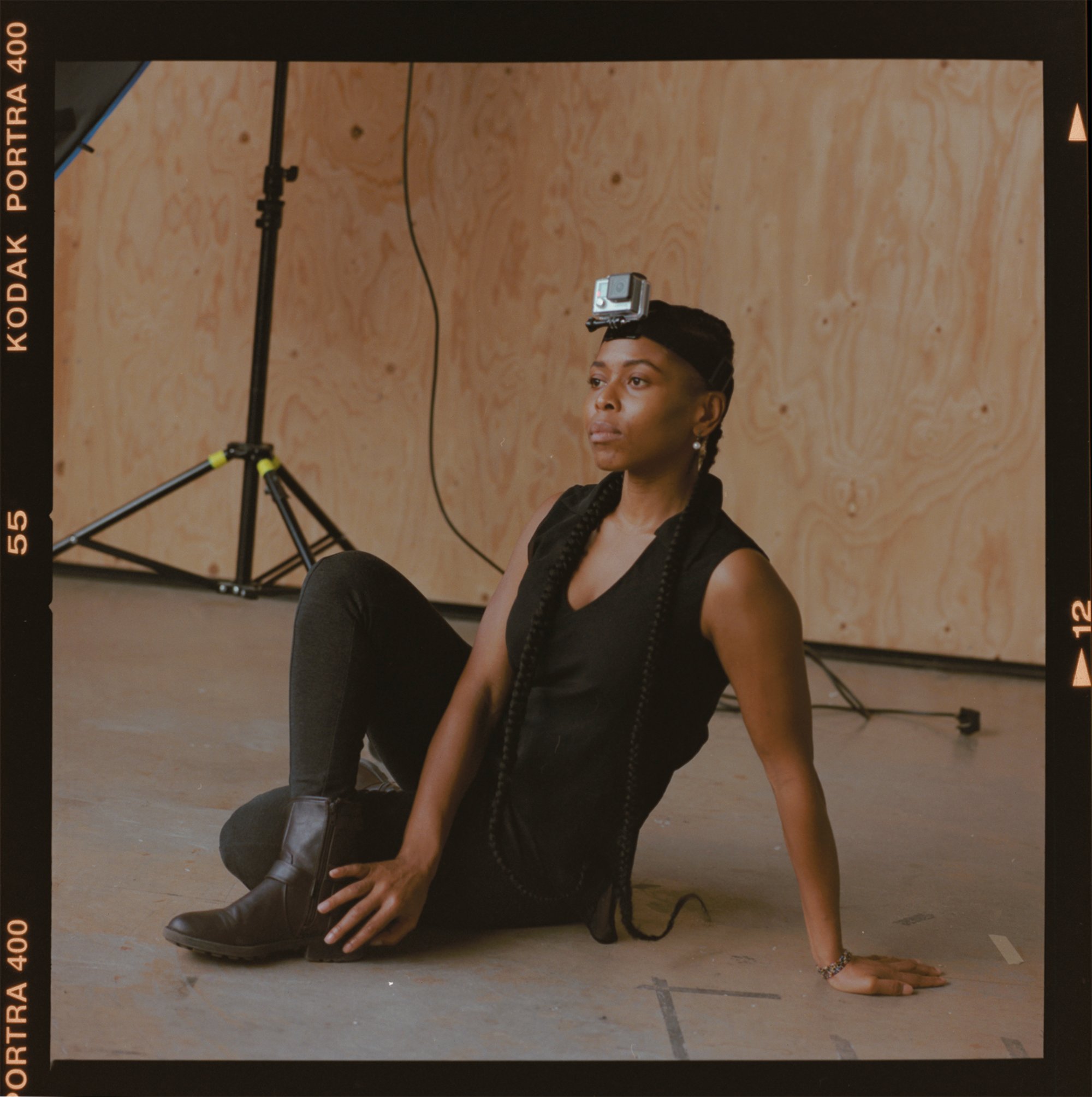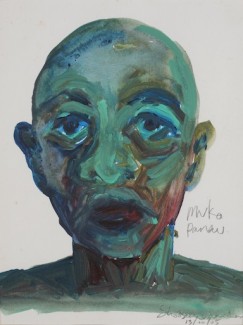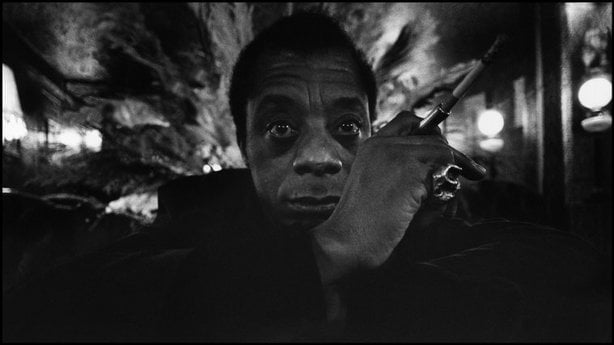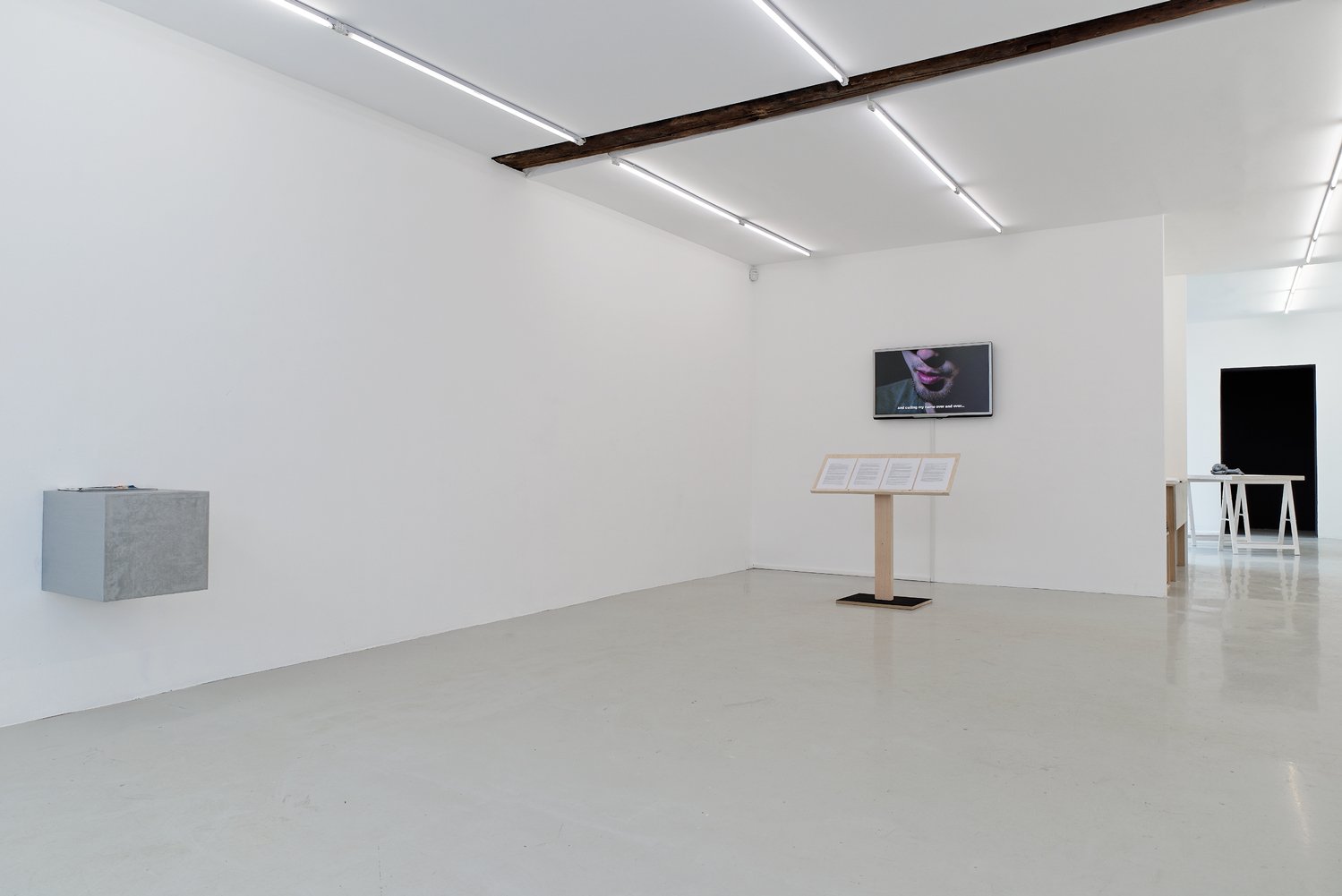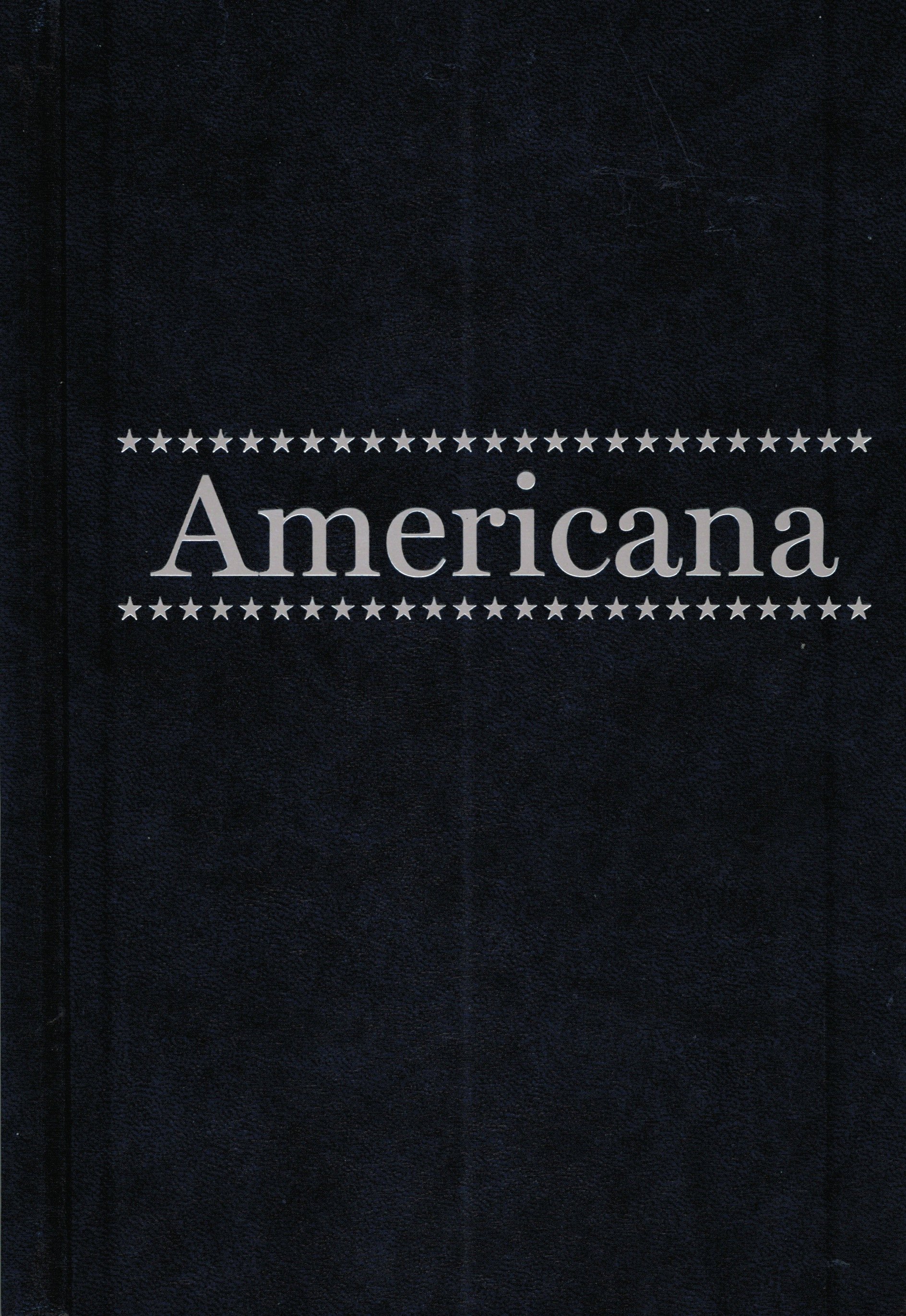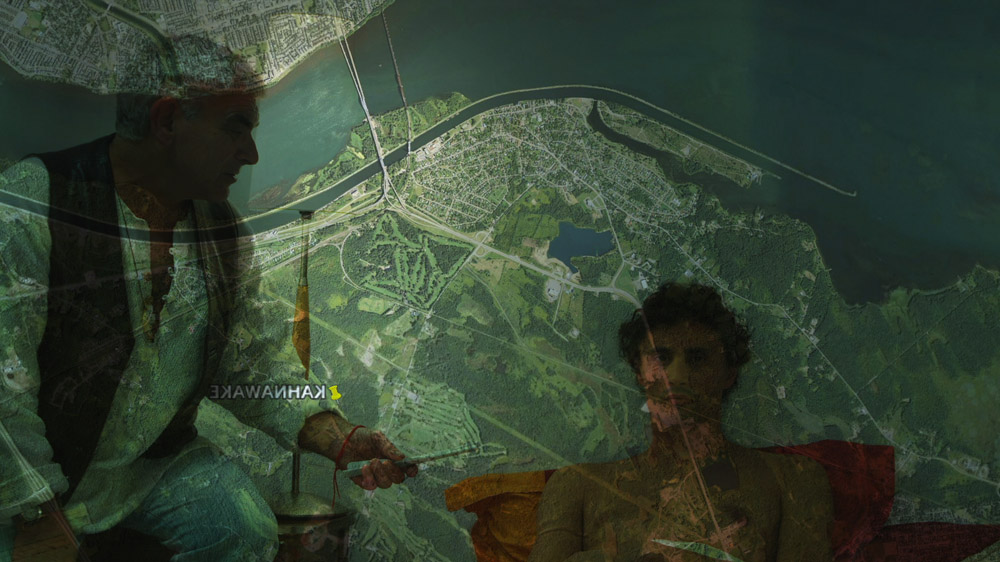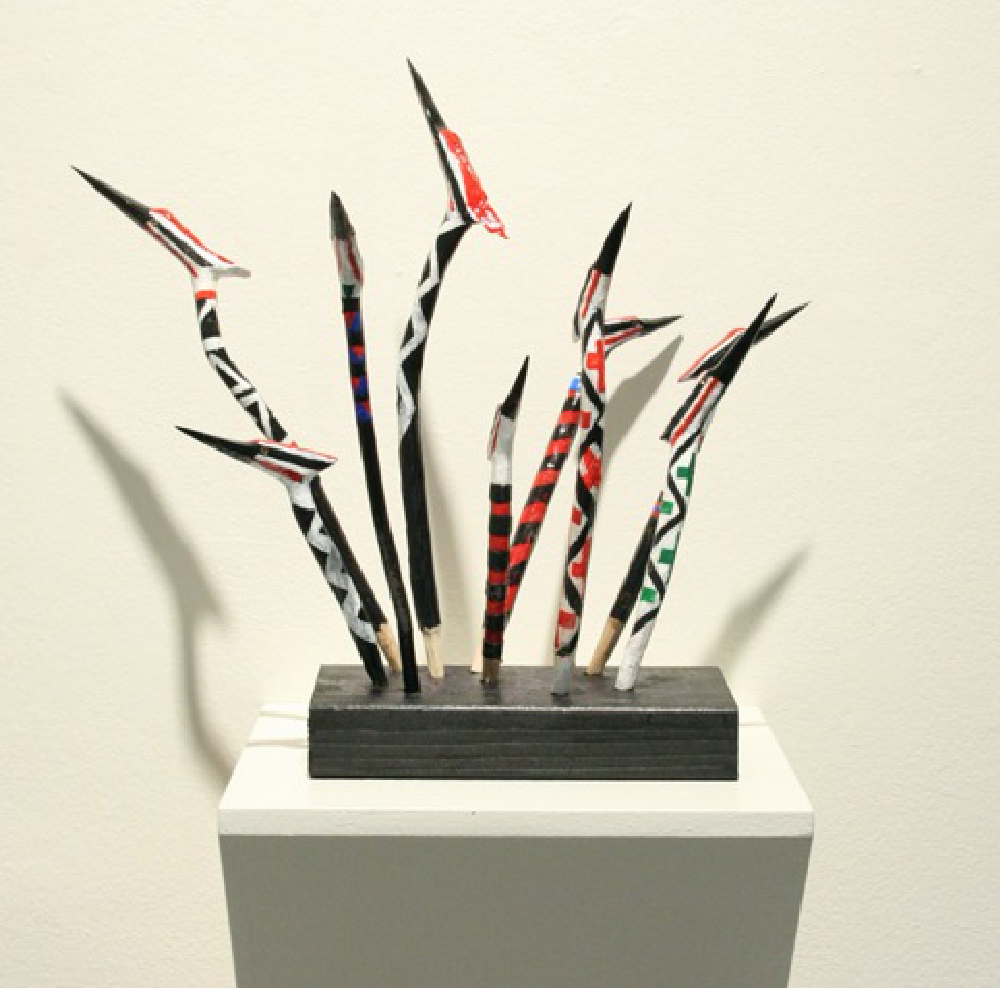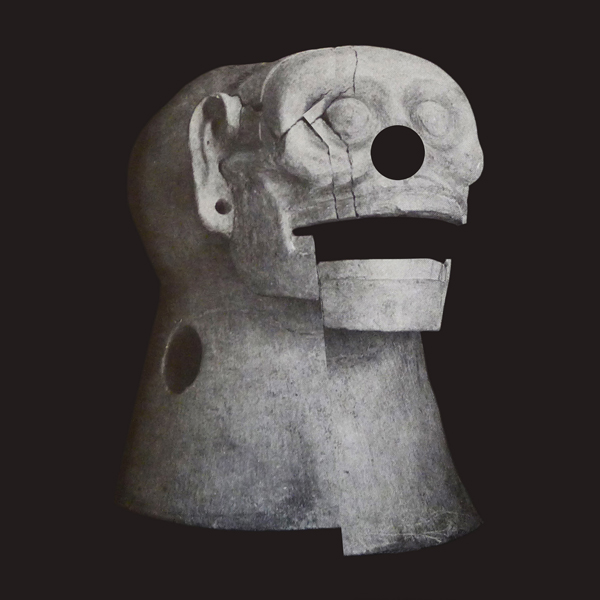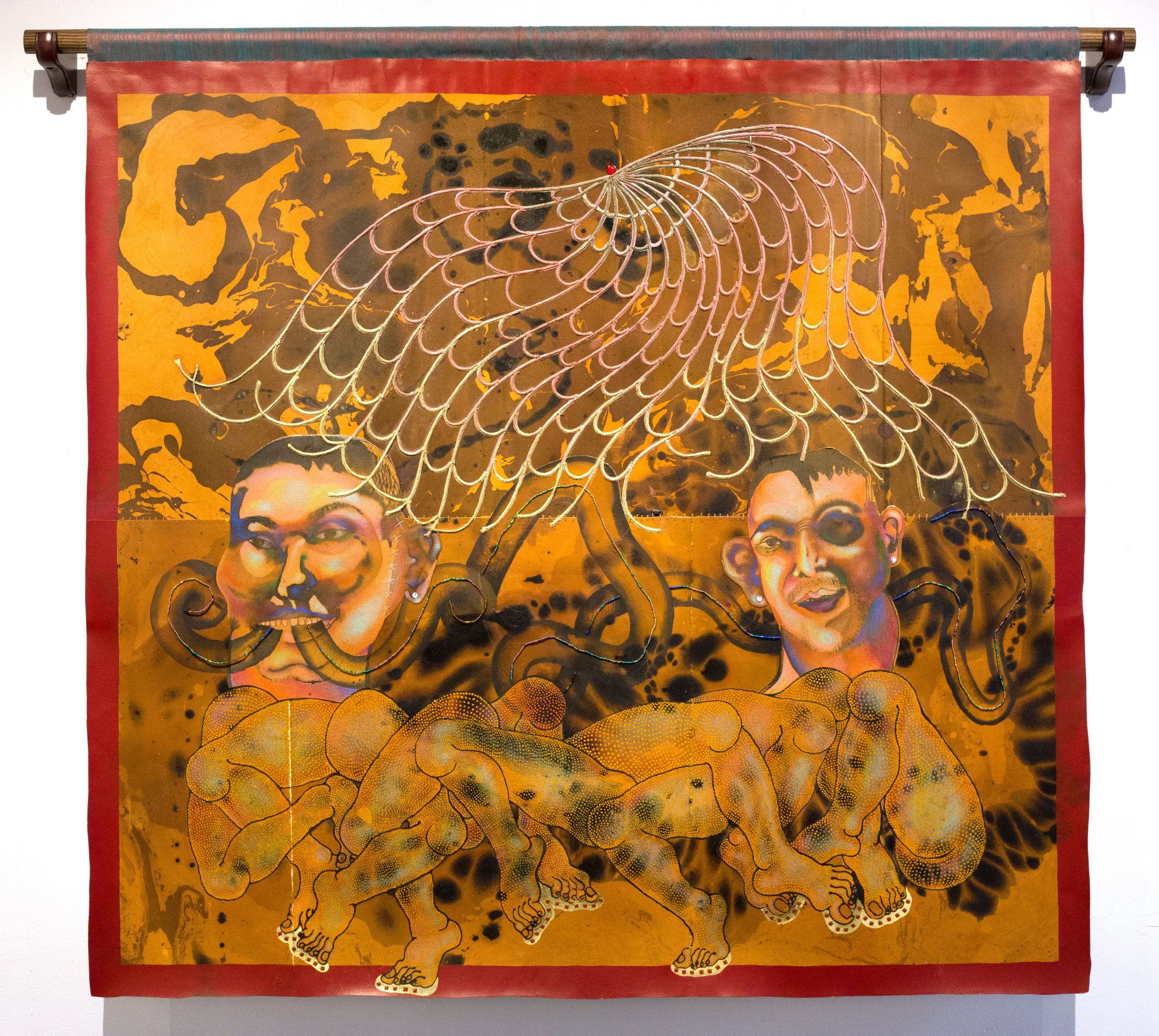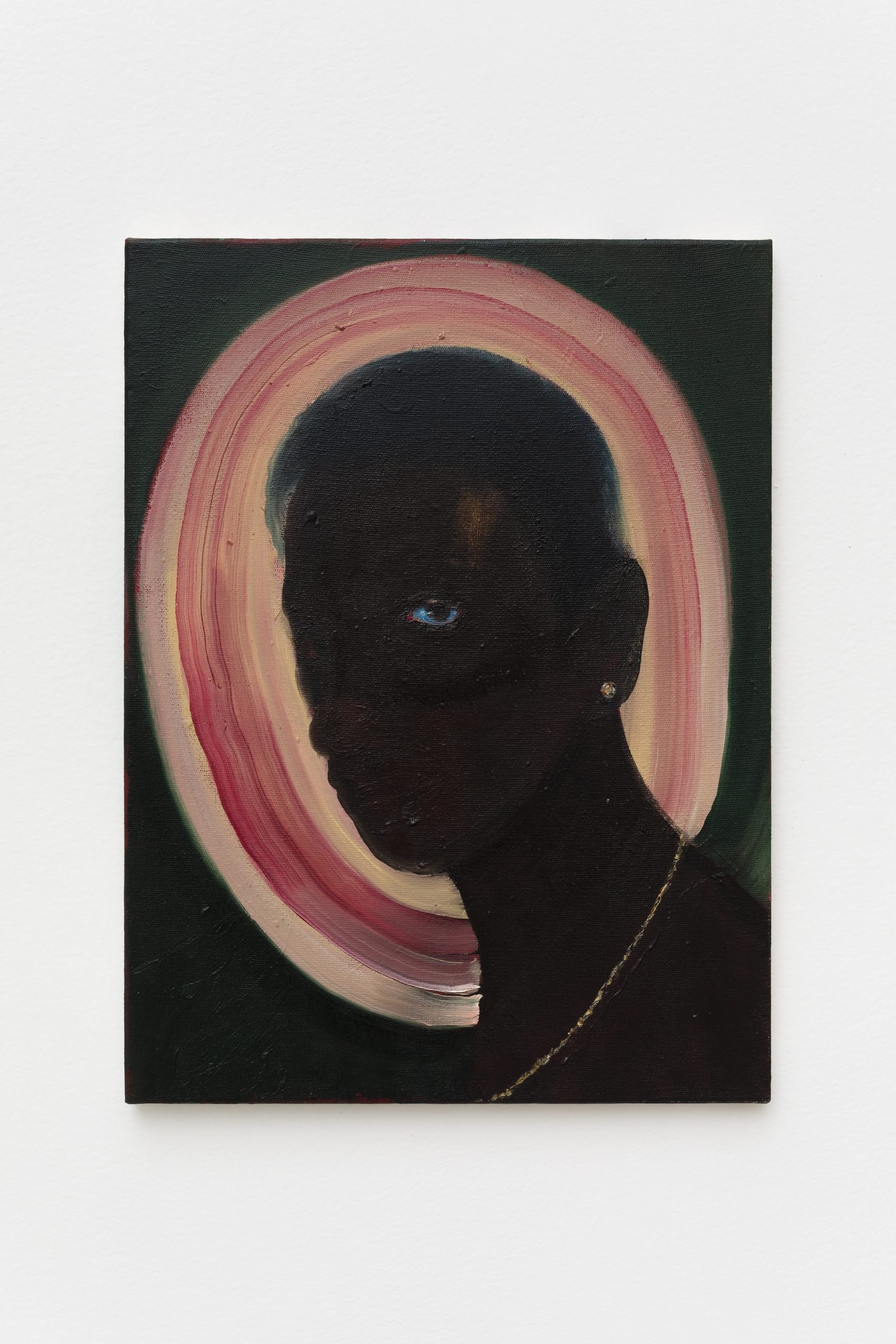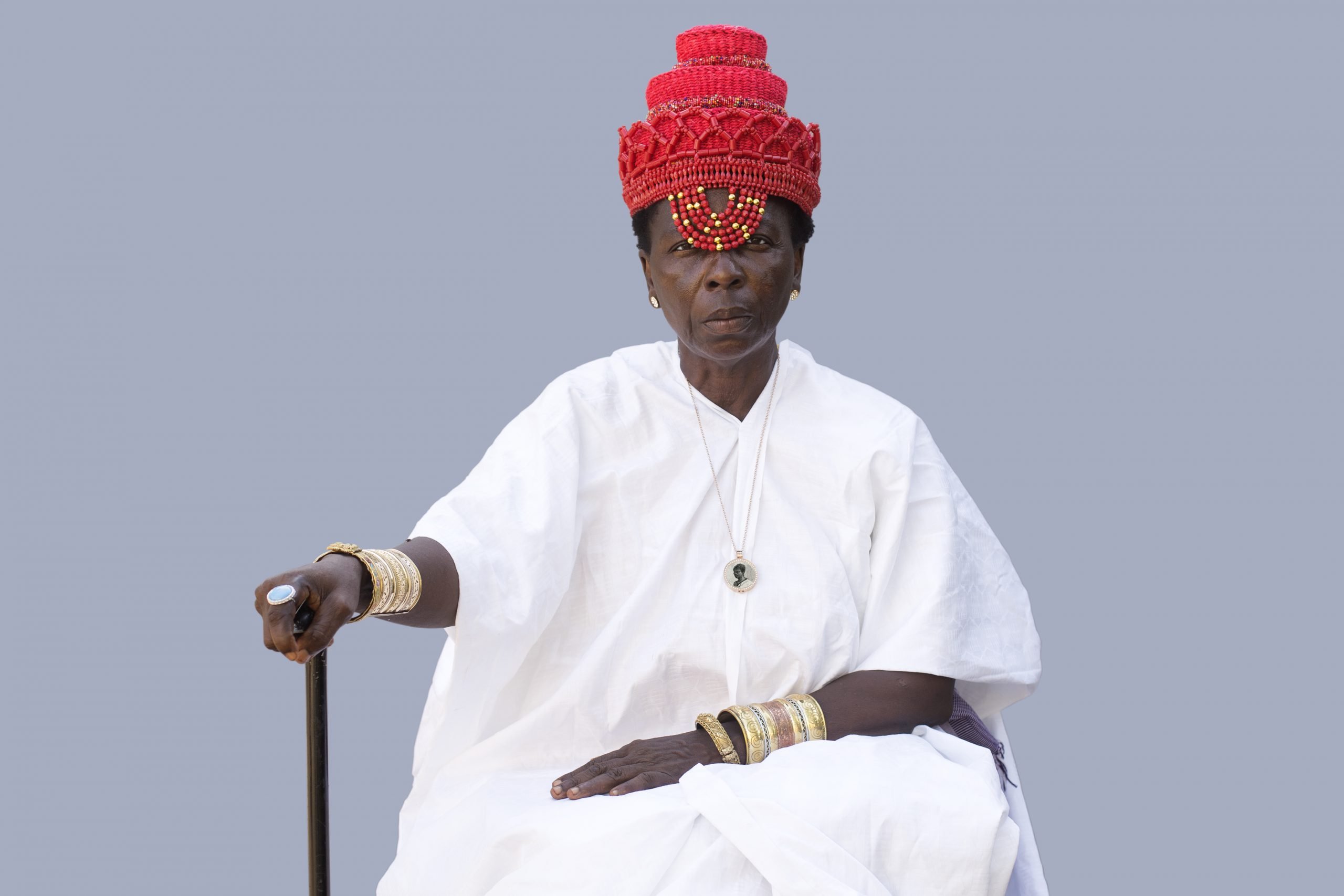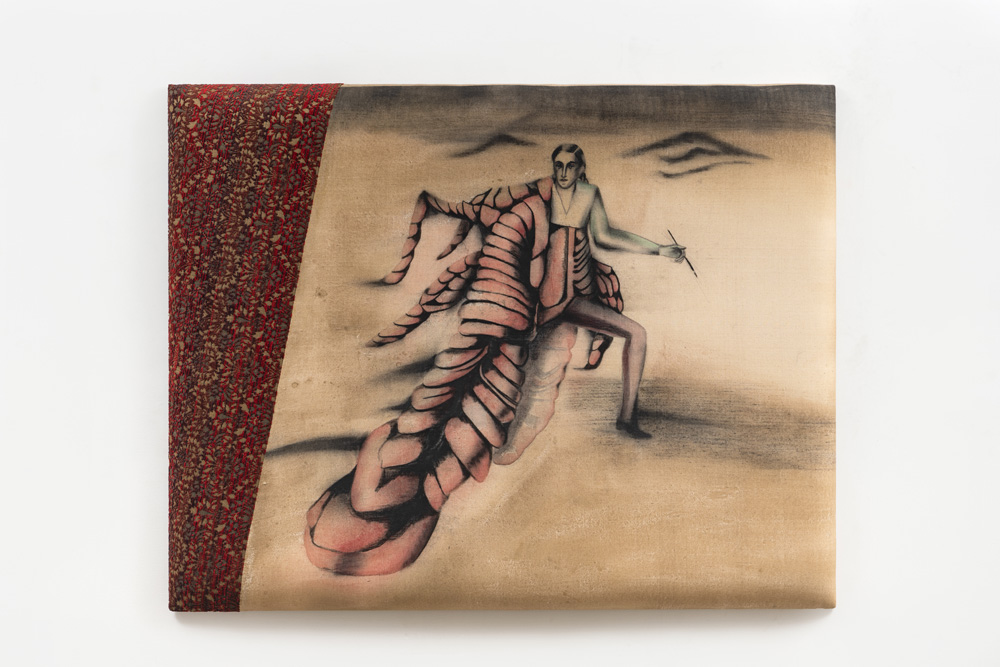![Resurgimiento [Resurgence]](https://kadist.org/wp-content/uploads/2023/01/IMG_Resurgence-Acrylic-on-canvas-135-x-67cm-scaled.jpg)
© » KADIST
Wynnie Mynerva Mendoza Ortiz
Wynnie Mynerva places their body at the center of their practice from an intimate perspective and healing dimension. Their paintings are thresholds where body parts proliferate beyond names and labels, dissolving and intermingling gender marks, organs, and prostheses. Resurgimiento [Resurgence] was produced in the aftermath of their fifth solo show Closing to Open (Galería Ginsberg, Lima, 2021), in which Mynerva addressed their experience of going through a vaginal surgical procedure to help them feel more aligned with their gender identity.

© » KADIST
Joe Biel
Drawing & Print (Drawing & Print)
Head in Hands by Joe Biel is part of a larger series of drawings made in connection with the book of short stories Navigating Ghosts by Annie Buckley. Biel’s small-scale black and white drawing features a torso holding their own head in their hands, though the expression on the bodiless face maintains a serene sensibility. The edges of the drawing around the figure’s neck and torso are softened so that the figure appears ghostly, as if the character is an illusion or dream.

© » KADIST
Auriea Harvey
Fauna is a figurative sculpture by Auriea Harvey that is characteristic of the artist’s practice—both serious and somewhat whimsical. Making use of old and new technologies, the work is a self-portrait. The sculpture features a soft and gentle human face made of 3D printed composite, sprouting from a clutter of clay and other materials.

© » KADIST
Shen Xin
Composed of five episodes, Brine Lake (A New Body) by Shen Xin is set in a fictional factory where iodine is produced as a byproduct of natural gas sourced from deep sea brine lakes. Korean, Japanese, and Russian are spoken in multiple episodes. The protagonists have multiple encounters and conversations with two unseen employees of the factory whose visions are overtaken by the camera.

© » KADIST
Neïl Beloufa
The short video Inside the Studio by Neïl Beloufa follows a humorous Toy Story -esque conversation between the artworks inside the artist’s studio. In the personless space, two animated paintings express their hopes for their future, contemplating the beverage options at the exhibition opening at which they intend to be presented, while a third painting forgoes such superficial conversation to consider their significance and purpose in the context of the art institution and the public’s perception. Interrupting their conversation, the artworks become the backdrop for an in-studio interview with the artist and a film crew.

© » KADIST
Ian Cheng
Ian Cheng’s project 3FACE is based on a model that is derived from both the artist’s extensive readings on psychology and cognition, and his own intuitive understanding of how people function. 3FACE positions the process of minting a generative NFT as a metaphor for personality development. While part of a series, because of the responsive coding, each NFT is unique and is informed by the contents of the owner’s wallet.

© » KADIST
Ian Cheng
Ian Cheng’s project 3FACE is based on a model that is derived from both the artist’s extensive readings on psychology and cognition, and his own intuitive understanding of how people function. 3FACE positions the process of minting a generative NFT as a metaphor for personality development. While part of a series, because of the responsive coding, each NFT is unique and is informed by the contents of the owner’s wallet.

© » KADIST
Wong Ping
Drawing & Print (Drawing & Print)
This selection of poster prints of Wong Ping’s animations includes the films Jungle of Desire, Doggy Love, Slow Sex, An Emo Nose, and Stop Peeping . They serve as a glimpse into the discourse and intricacy of the artist’s imagined, yet responsive approach to his realities. The series of posters echoes the once-vibrant aura of movie posters, when they were designed by artists and designers to encapsulate the tone, story, and visual style of a film in one large image, and were often as iconic as the movie itself.

© » KADIST
Laís Amaral
Drawing & Print (Drawing & Print)
Laís Amaral abstract paintings dialogue with the feminine power. Just like the flow of a river, Laís produces her paintings as a flux that emerges from within, an inner force that relates to all the women in her life, family, and ones who know the medicinal powers of nature; who are part of this feminine force latent in the earth. In order to discover elements about herself, Laís Amaral understands painting as a gesture of leakage.

© » KADIST
Sheelasha Rajbhandari
Agony of the New Bed by Sheelasha Rajbhandari brings out the familiar yet often ignored reality of gender discrimination and taboos built within the construct of marriage. Part of the artist’s series Marriage Taboos , these portraits of women from different age groups in Nepal are staged on cotton mattresses placed on miniature golden matrimonial beds. The embroidered text on top of the portraits in golden threads are a representation of the range of vulnerable and resilient emotions experienced by women and the social beliefs towards them.

© » KADIST
Lisetta Carmi
On New Year’s Eve in 1965, Lisette Carmi met and photographed a group of transgender people living and working on the Via del Campo in Genoa–the main street for prostitution in the city, located in the former Jewish ghetto. This encounter was the beginning of a seven year relationship with the group, and led to the publication of I Travestiti (1972), a controversial book that comprised all of the images Carmi took of the group between 1965-1971. Forming close friendships with the people she portrayed, the artist rented an attic near Via del Campo in Genoa to live with them, she captured the everyday lives of the group, depicting sex work from a new perspective.

© » KADIST
Pooja Gurung and Bibhusan Basnet
DADYAA: The Woodpeckers of Rotha by Pooja Gurung and Bibhusan Basnet illuminates a unique and seldom seen international perspective on indigenous cultures and contemporary social issues in the Nepali context. A small masterpiece, the work engages with one of the most pressing social issues in Nepal, mass migration and the dissolving of social fabric in rural areas. The story begins with an old couple, Atimaley and Devi, who live in a village in Jumla, in the highlands of Western Nepal.

© » KADIST
Guadalupe Rosales
90022 (Leonard Ave) by Guadalupe Rosales engages with memory, loss, grief, and nostalgia; themes that run throughout the artist’s practice. The work features a vertical mirror onto which Rosales invited family and community members to etch the names of friends and relatives in a collective memorialization of those who have died or are absent. On the surface and the bespoke metal frame are hand-etched initials, names, symbols, and dates.

© » KADIST
Paloma Contreras Lomas
Drawing & Print (Drawing & Print)
Paloma Contreras Lomas sometimes incorporates large scale drawing into her practice. For Contreras, drawing is a deeply personal and corporeal exercise that she relates to writing and narration. Her charcoal drawing Bugs Bunny Behind a Mesophile Bush features a gigantic hat providing shelter to the simultaneously identifiable and unidentifiable cartoon character hiding behind a wild bus.

© » KADIST
Sam Contis
Sam Contis’s photographs explore the relationship of bodies to landscape, and the shifting nature of gender identity and expression. Horseback is part of a photographic series Contis made at Deep Springs College, one of the United States’s last all-male institutions of higher learning, located in a remote desert valley on the California–Nevada border. Horseback is a black and white photograph that depicts the arched shoulders of a horse, its slick mane splayed across its neck.

© » KADIST
Javid Soriano
Set in the infamous Tenderloin district of San Francisco, Factotum of the City is a documentary film by Javid Soriano that delves into the life of a former world-class opera singer turned self-styled street hustler. Factotum of the City centers around Tim, a Juilliard School graduate who fell from the world opera stage into the bowels of San Francisco’s Tenderloin, an destitute place located amidst the city’s vibrant downtown. The film follows the opera man as he navigates the Tenderloin and its surrounding locales, allowing a glimpse into some of the bizarre, tragic, and comical situations he endures while living as a self-fashioned ‘Figaro’ of the street.

© » KADIST
Javier Castro
In the video Blanco sobre Blanco (White on White) , we see a white man appearing in a white screen embedded into a white wall— alluding to Malevich’s White on White series. Analogously, in Castro’s related work Negro sobre Negro (Black on Black) all we see is a completely black screen on a monitor that is recessed into a wall, also painted black. Gradually, the face of a man becomes visible as he steps out of the darkness and closer to the camera.

© » KADIST
Wang Tuo
Smoke and Fire is the first chapter of The Northeast Tetralogy , a film project that Wang Tuo began in 2017. The project is a unique regional research of Northeastern China that addresses the region’s geopolitical contentions. Drawing on significant moments from China’s modern history, Wang’s visual storytelling sets up and displaces a series of socio-historical situations through multiple narrative structures.

© » KADIST
Shaun Leonardo
Shaun Leonardo uses his own body to communicate and portray imagery. In his film Bull in the Ring , hyper-masculine images of physicality are staged at the expense of his own physical comfort. The function of the male body has long been a signifier of self-worth and the body affirms and legitimizes feelings of control and agency over environment.

© » KADIST
Haris Epaminonda
Haris Epaminonda’s work questions the manipulation and the flow of images as well as their power of fascination. The images she works with to create her collages (paper or video) come from magazines or history books, film extracts or soap operas from the 1960s and 1970s. By readapting a universal past (in her work on monuments) as well as personal (with tv series she used to watch as a child, etc.)

© » KADIST
Chen Zhexiang
In the video work Any Resemblance is Coincidental , CHEN Zhexiang mined portraits of real Asian criminals that were abandoned on the Internet. In order to form a database of the portraits, he saved the files under the original names retrieved from the Internet. CHEN used digital facial recognition technology to build a lexicon of the criminals’ facial characteristics in order to analyze them.

© » KADIST
Chloé Quenum
The stained glass windows of Chloé Quenum’s Les Allégories evoke the sacred and describe the movement of a rooster in the form of patterns extracted from a wax fabric found in Benin. The in situ motif becomes a motive of situation to materialize a certain idea of the movement. Her work is a form of thought about written language transformed into a sculpted piece.

© » KADIST
Matthew Angelo Harrison
In Hole #1 a zebra scull stands in as a representation of Africa, while the plexiglass box and the hole made through it represent the inaccessibility of that culture to African-Americans.

© » KADIST
Colectivo Los Ingrávidos
The word Coyolxauhqui refers to femicide or the killing of women in rural Mexico on the basis of gender. The mutilation of the Aztec moon goddess Coyolxauhqui by her brother Huitzilopochtli, the sun god and human sacrificer, is reimagined in this film. Coyolxauhqui by Colectivo Los Ingrávidos is the first in a trilogy of films that positions itself as a form of political resistance, delving into the relationship between current Mexican femicide and broader cultural traditions.

© » KADIST
Julian Abraham
In 2015, while in residence at the Jatiwangi Art Factory (JaF) located in the village of Jatisura in Jatiwangi, West Java, Indonesia, Togar initiated the Jatiwangi Cup in which the artist, together with communities in the area, established an annual bodybuilding contest. The area is renowned for its roof tile factories, and the cup aims to celebrate the factory worker’s physiques, sculpted by intense, daily, physical labor. Togar based the idea of the cup on the simple notion of collectivity.
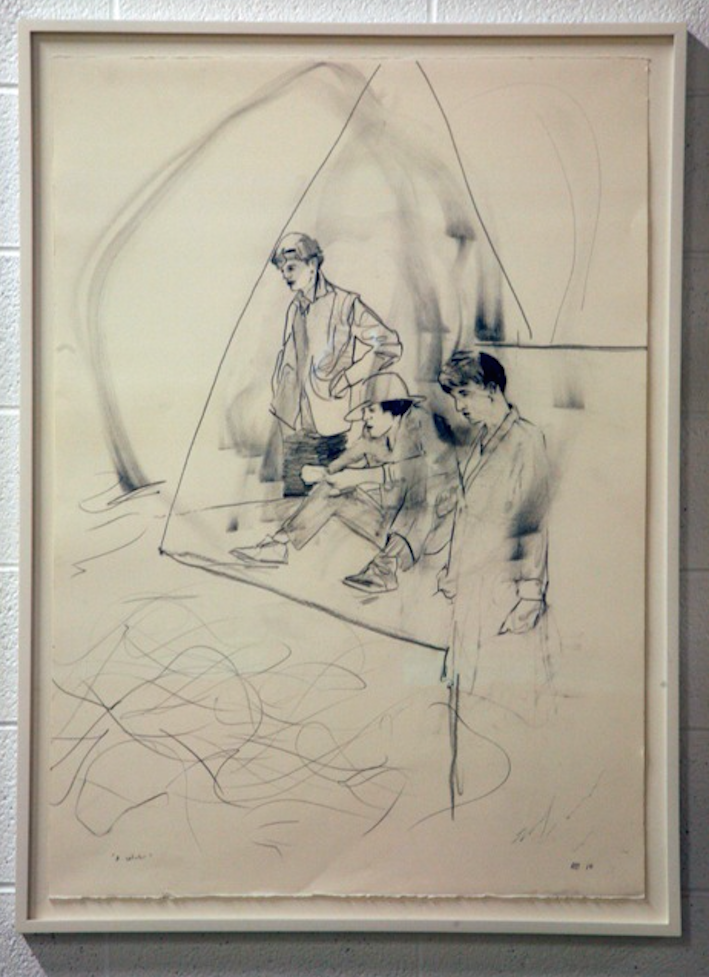
© » KADIST
Hernan Bas
Drawing & Print (Drawing & Print)
A Splinter (Study for Painting) is a large graphite work on paper by Hernan Bas that was intended as a study for a later painting. The composition features three unfinished figures, all of whom appear to be observing something unrendered or external to the picture plane. Around the group of figures roughly framed by the outline of a triangle, is a frenzy of loose marks and smudged lines that juxtapose the delicate features of the figures’ faces.

© » KADIST
Mithu Sen
home, a temporary place by Mithu Sen is part of a project called AºVOID. In this fragmented mental map, the landscape is fleeting, embossed, and ethereal; there are moments of recognition and also a near-violent sudden emptying of memory. Bodies are skeletal, nature is in entropy, context is removed.

© » KADIST
Jesse Krimes
Raybrook by Jesse Krimes takes its name from The Federal Correctional Institution, Ray Brook (FCI Ray Brook), a medium-security United States federal prison for male inmates located in Essex County, NY. In addition to its indexical title, this quilt-work tapestry is made from personal clothing and other like articles the artist was given by currently, and formerly incarcerated persons. It is part of a larger series of works called the Elegy Quilts , which illustrate domestic scenes inspired by conversations the artist has had with the individuals these fabrics were acquired from.

© » KADIST
Yin-Ju Chen
Extrastellar Evaluations is a multimedia installation produced during Yin-Ju Chen’s residency at Kadist San Francisco in the spring of 2016. Chen’s project departs from a 19th century theory popular within Western biogeography that posited the existence of a “lost land” or ancient continent called Lemuria that had sunk beneath the Indian and Pacific Ocean due to cataclysmic geological change. As a result, its inhabitants, the Lemurians, found refuge in Mount Shasta, California.

© » KADIST
Alex Da Corte
Slow Graffiti was produced for Da Corte’s exhibition at the Vienna Secession in 2017. The video is a shot-for-shot remake of the film “The Perfect Human” by Danish filmmaker Jørgen Leth (1967). The original is narrated in an anthropological manner, or as if listening to a guide at a zoo, but Da Corte’s version is stranger and more philosophical.
Wong Ping
Obscenity and profound issues of contemporary society are not mutually exclusive in Wong Ping’s video works...
Karam Natour
Through video and digital drawing Karam Natour manifests his interest in the power of language, and specifically how translation becomes a unique vehicle for a deeper understanding of issues connected to identity, race and gender...
Wang Tuo
Through film, performance, painting, and drawing, artist Wang Tuo interweaves disparate realities through archives, modern history, myth, and literature...
Ian Cheng
The work of Ian Cheng explores evolutionary processes, including mutation and adaptation in response to changing conditions...
Harit Srikhao
Harit Srikhao perceives photography as a culturally determined medium...
Baseera Khan
Designed by the artist and fabricated in collaboration with Kashmiri artisans, Baseera Khan’s Psychedelic Prayer Rugs combine visual iconography traditional to Islam, such as the crescent moon and lunar calendar, with brightly colored symbols of personal significance to the artist: a pair of embroidered sneakers, a fragment of an Urdu poem, and the Purple Heart medal...
Matthew Angelo Harrison
Detroit’s Matthew Angelo Harrison works at the intersection of sculpture and technology, building his own 3D printers (which rise to the status of sculpture), and using these creations to formulate others...
Fernanda Laguna
Fernanda Laguna has mobilized and influenced a whole generation of artists through her various projects since the mid-1990s...
Carolyn Drake
Carolyn Drake works on long term photo-based projects that involve travel and collaboration...
Pierre Gonnord
Pierre Gonnord is known for his large scale photographic portraits of people who inhabit the fringes of society...
Julian Abraham
Julian Abraham “Togar” is an artist, musician, and pseudo-scientist...
Sin Wai Kin
Through performance, moving image, writing, and print, artist Sin Wai Kin (formerly known as Victoria Sin) uses speculative fiction to interrupt normative processes of desire, identification, and objectification...
Javier Castro
Javier Castro was born in the in the neighbourhood of San Isidro in the heart of Habana Vieja, Cuba, where he lives and works...
Karla Kaplun
Karla Kaplun’s practice centers on micro-utopias, the construction and functioning of collective memory, as well as mechanisms of political and economic power and control...
Lubaina Himid
- location: Zanzibar, Tanzania
- year born: 1954
- gender: female
- nationality: Tanzanian
Mithu Sen
Mithu Sen’s writing is central to her practice, as a poet from West Bengal, a region of great Indian literary history, poetic and visual tropes giving ground to her challenge of semiotics...
Brian Tripp
Brian D...
Wynnie Mynerva Mendoza Ortiz
Wynnie Mynerva is a non-binary artist based in Lima whose pictorial and performative practice is developed in close collaboration with the transgender and queer communities where they belong...
Wu Tsang
Wu Tsang’s work is often framed in terms of her identity as a trans woman of color...
Andrew Thomas Huang
Andrew Thomas Huang is one of the most original upcoming film makers working at the intersection of tradition, spirituality, non-Western imaginary, queerness, and digital fantasies and technical possibilities...
Sheelasha Rajbhandari
Sheelasha Rajbhandari is a visual artist, cultural organizer, and co-founder of the artist collective Artree Nepal (founded in 2013) based in Kathmandu...
Walid Raad
Walid Raad is a Lebanese artist whose work investigates the way historical events of physical and psychological violence affect bodies, minds, culture, and memory...
Danielle Dean
Danielle Dean creates videos that use appropriated language from archives of advertisements, political speeches, newscasts, and pop culture to create dialogues to investigate capitalism, post-colonialism, and patriarchy...
Aslan Goisum
Chechen artist Aslan Goisum’s work engages with memories–collective and personal, political and cultural–to unearth clues about colonial realities, how they have been endured, and how they might be undone...
Erick Beltran
- year born: 1974
- gender: male
- nationality: Mexican
- home town: Mexico City, Mexico
Jarrett Key
Jarrett Key’s work addresses their concerns about the state of their freedom in America...
Mary Helena Clark
Mary Helena Clark is an artist working in film, video, and installation...
Michelle and Noel Keserwany
Michelle and Noël Keserwany compose and perform their own songs, as well as contribute to the illustrations and animations featured in the videos they produced...
Public Movement
The performative research group Public Movement explores the creation of national, social, and political identities through public choreographies...
-
1960-1969
Lisetta Carmi
1969On New Year’s Eve in 1965, Lisette Carmi met and photographed a group of transgender people living and working on the Via del Campo in Genoa–the main street for prostitution in the city, located in the former Jewish ghetto...
-
1980-1989
Paz Errázuriz
1986La manzana de Adán (La Palmera, Santiago) by Paz Errázuriz is part of the celebrated series La manzana de Adán (Adam’s apple) that spans 5 years (1982-1987) of documenting the lives of transgender sex workers in La Jaula and La Palmera brothels in the Chilean cities of Talca and Santiago...
-
2000-2009
Tracey Rose
2001“Maqe II” is at first glance a romantic image of three diaphanous angels hovering in the luminous sky over a South African township...
Pierre Gonnord
2002Nakayama is part of a larger body of work by Pierre Gonnord focusing on the analysis and description of the lifestyles of urban youth in large Western cities...
Joe Biel
Drawing & Print
2007(Drawing & Print) Head in Hands by Joe Biel is part of a larger series of drawings made in connection with the book of short stories Navigating Ghosts by Annie Buckley...
Javier Castro
2008In the video Negro sobre Negro (Black on Black) all we see is a completely black screen on a monitor that is recessed into a wall, also painted black...
Mahmoud Khaled
2009CAMARADERIE is a precursor to and a blueprint for Mahmoud Khaled’s later forays into queer aesthetics and modes of visual representation...
Goddy Leye
2009In Goddy Leye’s installation work The Beautiful Beast , a video is projected onto a gold-colored wooden box filled with sesame seeds...
-
2010-2019
Hernan Bas
Drawing & Print
2010(Drawing & Print) A Splinter (Study for Painting) is a large graphite work on paper by Hernan Bas that was intended as a study for a later painting...
Brian Tripp
2010For many years Tripp has been involved in reviving Karuk ceremonies that had been discontinued for decades, he developed his signature abstract style, based in Karuk design, ceremonial regalia forms, and related cultural and political iconography...
Brian Tripp
2010For many years Tripp has been involved in reviving Karuk ceremonies that had been discontinued for decades, he developed his signature abstract style, based in Karuk design, ceremonial regalia forms, and related cultural and political iconography...
Erick Beltran
Drawing & Print
2010(Drawing & Print) In his posters, prints, and installations, Erick Beltrán employs the language and tools of graphic design, linguistics, typography, and variations in alphabetical forms across cultures; he is specifically interested in how language and meaning form structures that can be misconstrued as universal...
Tamar Guimarães
2010Canoas by Tamar Guimarães is a film made for the 2010 São Paulo biennial as an exercise in the projection of national identity...
Angela Su
Drawing & Print
2011(Drawing & Print) From afar, Chimeric Antibodies by Angela Su may look like scientific drawings or botanical illustrations...
Frédéric Moser, Philippe Schwinger
2011In 1978, Jean-Luc Godard and Anne-Marie Miéville made the TV series: “France / tour / detour / two / children”, in which they aimed to identify the lifestyle of French people in 12 episodes of 26 minutes each...
Haris Epaminonda
2012Haris Epaminonda’s work questions the manipulation and the flow of images as well as their power of fascination...
Danielle Dean
2012No Lye by Danielle Dean documents a group of five women, including Dean herself, confined to a small, cramped bathroom, communicating only by using slogans culled from beauty advertisements (“beauty is skin deep”, “naturalise, it’s in our nature to be strong and balanced”) and quotes from political speeches (“we must protect our borders”, “we are fighting for our way of life and our ability to fight for freedom”)...
Amol k Patil
2012The title of the performance video work Impression by Amol k Patil refers to an Indian tradition...
Ana Roldán
2012Ana Roldán’s Displacements works use images taken from a 1970s exhibition catalogue for an exhibition called The Death in Mexico...
Javid Soriano
2013Set in the infamous Tenderloin district of San Francisco, Factotum of the City is a documentary film by Javid Soriano that delves into the life of a former world-class opera singer turned self-styled street hustler...
Maya Watanabe
2013Three men with their backs to each other, dressed similarly in dark colors, stare straight at the camera...
Angelica Mesiti
2013Angelica Mesiti’s piece, The Calling (2013-14) is a poignant exploration of ancient human traditions evolving and adapting to the modern world...
Aykan Safoglu
2013Off-White Tulips is an intimate, meditative, and tender essay-film composed as a fictional exchange between Black gay writer James Baldwin and the artist, Aykan Safoglu...
Nazgol Ansarinia
2013In the early 2000s, as urban redevelopment accelerated and intense construction significantly diminished public space in Tehran, state-funded murals began to represent imaginary landscapes on building facades...
Sam Contis
2014Sam Contis’s photographs explore the relationship of bodies to landscape, and the shifting nature of gender identity and expression...
Javier Castro
2014In the video Blanco sobre Blanco (White on White) , we see a white man appearing in a white screen embedded into a white wall— alluding to Malevich’s White on White series...
Francisco Herrero Peñuela
2014Francisco Herrero Peñuela uses old forms to make his elaborate, richly textured surfaces...
Malik Nejmi
2014La Chambre Marocaine series is a means to reconnect personally to his connection to family history and objectively assess the process of reconnection...
Mary Helena Clark
2014The Dragon is the Frame by Mary Helena Clark is an elegy that is somewhat paradoxically organized as a film noir or murder mystery, one that pays direct homage to Hitchcock’s Vertigo ...
Sam Contis
2014Sam Contis’s photographs explore the relationship of bodies to landscape, and the shifting nature of gender identity and expression...
Mimian Hsu Chen
2014In Hsu’s work, Colonia China (2014), the artist documents a Chinese cemetery of Costa Rica’s Limón Province, along the country’s Caribbean coast...
Matthew Angelo Harrison
2015In Hole #1 a zebra scull stands in as a representation of Africa, while the plexiglass box and the hole made through it represent the inaccessibility of that culture to African-Americans....
Zach Reini
2015Particularly shaped by his own youth in the 1990s, his recent works have incorporated things like a marijuana leaf, a dragon-emblazoned chain wallet, metal grommets, and the ubiquitous (in the 90s) Stussy symbol...
Gauri Gill
2015Acts of Appearance is an ongoing series by Gauri Gill consisting of lush, large-scale color portraits of the residents of a village in Maharashtra, in Western India, which is known for making Adivasi masks...
Aslan Goisum
2015The video work Volga by Aslan Goisum begins with a sweeping field caught under a misty, gray sky...
Naresh Kumar
Drawing & Print
2015(Drawing & Print) “Relation between Black and blood” explores the connection between performance, installation and representation...
Edie Fake
Drawing & Print
2015(Drawing & Print) Related to Edie Fake’s Memory Palaces series — reimagined facades of urban lesbian bars and gay nightclubs — Personal Business draws an association between architecture and the body, with ornamental structures that are decorative and protective...
Wong Ping
Drawing & Print
2016(Drawing & Print) This selection of poster prints of Wong Ping’s animations includes the films Jungle of Desire, Doggy Love, Slow Sex, An Emo Nose, and Stop Peeping ...
Karam Natour
Drawing & Print
2016(Drawing & Print) Humor and Law, Kick of Duality, Point of View III, Selfie with Pan, and Thinking of You are part of an ongoing series of digital drawings Karam Natour has been creating since he was studying at Bezalel Academy of Art and Design, Jerusalem...
Wong Ping
Drawing & Print
2016(Drawing & Print) This selection of poster prints of Wong Ping’s animations includes the films Jungle of Desire, Doggy Love, Slow Sex, An Emo Nose, and Stop Peeping ...
Matthew Angelo Harrison
2016In Bodily Study of Unthinking Groups, Harrison combines two disparate materials into one stratified stack: automotive clay (used in detailing cars) forms the earthy base, while fragments of zebra skull become imbedded in this falsified soil...
Wong Ping
Drawing & Print
2016(Drawing & Print) This selection of poster prints of Wong Ping’s animations includes the films Jungle of Desire, Doggy Love, Slow Sex, An Emo Nose, and Stop Peeping ...
Karam Natour
Drawing & Print
2016(Drawing & Print) Humor and Law, Kick of Duality, Point of View III, Selfie with Pan, and Thinking of You are part of an ongoing series of digital drawings Karam Natour has been creating since he was studying at Bezalel Academy of Art and Design, Jerusalem...
Wong Ping
Drawing & Print
2016(Drawing & Print) This selection of poster prints of Wong Ping’s animations includes the films Jungle of Desire, Doggy Love, Slow Sex, An Emo Nose, and Stop Peeping ...
Karam Natour
Drawing & Print
2016(Drawing & Print) Humor and Law, Kick of Duality, Point of View III, Selfie with Pan, and Thinking of You are part of an ongoing series of digital drawings Karam Natour has been creating since he was studying at Bezalel Academy of Art and Design, Jerusalem...
Cally Spooner
2016The installation Self Tracking (the five stages of grief) was realized from a performance that is to be re-activated...
Wong Ping
Drawing & Print
2016(Drawing & Print) This selection of poster prints of Wong Ping’s animations includes the films Jungle of Desire, Doggy Love, Slow Sex, An Emo Nose, and Stop Peeping ...
Karam Natour
Drawing & Print
2016(Drawing & Print) Humor and Law, Kick of Duality, Point of View III, Selfie with Pan, and Thinking of You are part of an ongoing series of digital drawings Karam Natour has been creating since he was studying at Bezalel Academy of Art and Design, Jerusalem...
Jill Magid
2016In 1995, the personal and professional archives of the Mexican architect Luis Barragán were acquired (including the rights to the name and the work of the architect) by the Swiss furniture enterprise Vitra...
Karam Natour
Drawing & Print
2016(Drawing & Print) Humor and Law, Kick of Duality, Point of View III, Selfie with Pan, and Thinking of You are part of an ongoing series of digital drawings Karam Natour has been creating since he was studying at Bezalel Academy of Art and Design, Jerusalem...
Chloé Quenum
2017The stained glass windows of Chloé Quenum’s Les Allégories evoke the sacred and describe the movement of a rooster in the form of patterns extracted from a wax fabric found in Benin...
Alex Da Corte
2017Slow Graffiti was produced for Da Corte’s exhibition at the Vienna Secession in 2017...
Colectivo Los Ingrávidos
2017The word Coyolxauhqui refers to femicide or the killing of women in rural Mexico on the basis of gender...
Baseera Khan
2017Designed by the artist and fabricated in collaboration with Kashmiri artisans in India, Baseera Khan’s Psychedelic Prayer Rugs combine visual iconography traditional to Islam, such as the crescent moon and lunar calendar, with brightly coloured symbols of personal significance to the artist: a pair of embroidered sneakers, a fragment of an Urdu poem, and the Purple Heart medal...
Farah Al Qasimi
2017Farah Al Qasimi’s approach to photography deviates from the norms and conventions of traditional figurative and portrait photography...
Fernanda Laguna
2017Llorar mucho (To Cry A Lot) is representative of Fernanda Laguna’s practice of the past twenty years...
Baseera Khan
2017Designed by the artist and fabricated in collaboration with Kashmiri artisans in India, Baseera Khan’s Psychedelic Prayer Rugs combine visual iconography traditional to Islam, such as the crescent moon and lunar calendar, with brightly coloured symbols of personal significance to the artist: a pair of embroidered sneakers, a fragment of an Urdu poem, and the Purple Heart medal...
Sin Wai Kin
Drawing & Print
2017(Drawing & Print) A woman you thought you knew by Sin Wai Kin originates from a performance series titled A View from Elsewhere ...
Sinzo Aanza
2017Projet d’attentat contre l’image? (Acte 3) by Sinzo Aanza brings together literature and objects in their varied forms...
Yin-Ju Chen
2018Extrastellar Evaluations is a multimedia installation produced during Yin-Ju Chen’s residency at Kadist San Francisco in the spring of 2016...
Pooja Gurung and Bibhusan Basnet
2018DADYAA: The Woodpeckers of Rotha by Pooja Gurung and Bibhusan Basnet illuminates a unique and seldom seen international perspective on indigenous cultures and contemporary social issues in the Nepali context...
Auriea Harvey
2018Fauna is a figurative sculpture by Auriea Harvey that is characteristic of the artist’s practice—both serious and somewhat whimsical...
Sheelasha Rajbhandari
2018Agony of the New Bed by Sheelasha Rajbhandari brings out the familiar yet often ignored reality of gender discrimination and taboos built within the construct of marriage...
Francisca Benítez
2018You have given the world your songs by Francisca Benítez is a poem in American Sign Language (ASL)...
Fernanda Laguna
2018¡Qué triste estoy! (I’m So Sad) is representative of Fernanda Laguna’s practice of the past twenty years...
Awol Erizku
2018Awol Erizku’s image Origin of Afro-Esotericism has compositional force and a rhythmic use of full-blast color...
siren eun young jung
2018Taking the same name as their most recent solo show at the Kunstverein für die Rheinlande und Westfalen in Düsseldorf, siren eun young jung’s video work Deferral Theatre intertwines various threads from the last decade of the artist’s research into the Yeoseong Gukgeuk theatrical form, in which all of the roles are played by women, as well as performance-based modes of queer resistance in South Korea...
Christina Quarles
2018The title of the painting refers to the fact that the figure’s behind is raised upwards and the face is found at the bottom of the painting, thus inverting the way in which people are normally seen...
Juan Brenner
2018The photographic series Tonatiuh (The Son of the Sun) by Juan Brenner is an in-depth visual study of current Guatemalan society from the perspective of miscegenation and the incalculable consequences of the Spanish conquest...
D’Angelo Lovell Williams
2018On January 7th, 2020, artist D’Angelo Lovell Williams was diagnosed with HIV...
Carolyn Drake
2018Megan and Hazel Sue at Creekmore House by Carolyn Drake is from a series of works titled Knit Club ...
Sin Wai Kin
2018The video Tell me everything you saw, and what you think it means by Sin Wai Kin is from a performance series titled A View from Elsewhere...
Julian Abraham
2019In 2015, while in residence at the Jatiwangi Art Factory (JaF) located in the village of Jatisura in Jatiwangi, West Java, Indonesia, Togar initiated the Jatiwangi Cup in which the artist, together with communities in the area, established an annual bodybuilding contest...
Alicia Henry
2019Out of simple materials, Alicia Henry creates enigmatic, somewhat troubled characters, which reveal her interest in the complexities and the contradictions surrounding familial relationships...
Karla Kaplun
Drawing & Print
2019(Drawing & Print) Studying the body in movement, this series of drawings depart from Karla Kaplun’s work A ztec BLAST® Workout (AWB) ...
Andrew Thomas Huang
2019Highly autobiographical, exquisitely made and compiling different aspects of the artist’s practice, Kiss of the Rabbit God is one of Andrew Thomas Huang’s most precise, relevant, and successful videos...
Matthew Lutz-Kinoy
2019The Lion’s Hunt by Matthew Lutz-Kinoy is a large format painting that recalls Delacroix’s paintings and tapestries from the 19th century, where the painterly surface became a garden invaded by wild beasts...
Julian Abraham
2019In 2015, while in residence at the Jatiwangi Art Factory (JaF) located in the village of Jatisura in Jatiwangi, West Java, Indonesia, Togar initiated the Jatiwangi Cup in which the artist, together with communities in the area, established an annual bodybuilding contest...
Maryam Hoseini
2019Secrets Between Her and Her Shadow 10 by Maryam Hoseini is from a series of paintings of the same title that are inspired by the story Layla and Majnun – an Arabic love story about Majnun, a 7th century Bedouin poet, and his lover, Layla...
Ayoung Kim
2019In 2019, Ayoung Kim traveled to Mongolia to research its widespread animistic belief system towards land, mother rock, stones, and sacred caves that purify human guilt...
Karla Kaplun
Drawing & Print
2019(Drawing & Print) Studying the body in movement, this series of drawings depart from Karla Kaplun’s work A ztec BLAST® Workout (AWB) ...
Yim Sui Fong
2019In the nine-channel video installation, Against Step by Yim Sui Fong, a phantasmagorical image of a male dancer appears on a large-scale video projected on a floating retro-projection screen...
Sahana Ramakrishnan
2019Sahana Ramakrishnan’s work blends cultural influences, spanning a range of visual mythologies, she weaves together a tapestry of pop cultural references that are upended by the artist’s exploration of identity, sexuality and gender perspectives...
-
2020-2029
Jesse Krimes
2020Raybrook by Jesse Krimes takes its name from The Federal Correctional Institution, Ray Brook (FCI Ray Brook), a medium-security United States federal prison for male inmates located in Essex County, NY...
Paloma Contreras Lomas
Drawing & Print
2020(Drawing & Print) Paloma Contreras Lomas sometimes incorporates large scale drawing into her practice...
Antonio Obá
2020Figura Noturna II by Antônio Obá depicts a dark figure, surrounded by a halo of light set against an even darker background...
Jarrett Key
2020Jarrett Key’s practice combines several modes of production into a single frame, incorporating sculpture, painting, and performance...
Mike Cloud
2020In his series Hanging and Beheading Paintings Mike Cloud speaks to the suffering of a series of named (and occasionally unnamed) individuals, addressing their trauma within the language of abstraction...
Eduardo Navarro
2020The installation Breathspace by Eduardo Navarro encompasses all the content presented at the artist’s first solo exhibition, of the same name, at Gasworks, UK...
YOUNG-HAE CHANG HEAVY INDUSTRIES
2020The absurd condition of human survival under environmental degradation and geonational balkanization is taken as a starting point for WA’AD by YOUNG-HAE CHANG HEAVY INDUSTRIES...
Manuel Solano
2020Since Manuel Solano became blind, they developed a technique that relies on audio descriptions that allow for an assistant to place pins and threads on a grid that guides the artist’s hands through the surface...
Manuel Correa
2020Manuel Correa’s short film Didn’t Know I Died is a testimonial portrait of the acclaimed Colombian poet Olga Elena Mattei...
rafa esparza
2020thanks for staying alive Fern.1994 by rafa esparza is from a body of work that pays homage to youth culture in the 90s...
Chen Zhexiang
2021In the video work Any Resemblance is Coincidental , CHEN Zhexiang mined portraits of real Asian criminals that were abandoned on the Internet...
Neïl Beloufa
2021The short video Inside the Studio by Neïl Beloufa follows a humorous Toy Story -esque conversation between the artworks inside the artist’s studio...
Ishola Akpo
2021Noticing the lack of archives on the queens of various African kingdoms, artist Ishola Akpo created several series of work that retrace their history...
Arash Fayez
2021The short film I Can Only Dance to One Song by Arash Fayez features a series of people from the migrant community in Barcelona singing along or dancing to songs of their choosing...
Yétúndé Olagbaju
2021Yétúndé Olagbaju’s On becoming a star series recuperates the figure of ‘Mammy’, a stereotype rooted in American slavery that typically depicts a larger, dark skinned woman as a maternal presence, often within a domestic setting, and typically taking care of white children...
Anne Imhof
2021Anne Imhof’s video work Untitled (Wave) creates resonances between the feminine, adoration, and immateriality, while also referring to the history of art and aesthetics, in particular the concept of the sublime...
Soufiane Ababri
Drawing & Print
2021(Drawing & Print) Soufiane Ababri’s desire to construct a historical family and a genealogy of queer kinships in Bedwork / Yes I AM sees him conjuring up a pantheon of gay writers and artists whose intellect has changed the course of human history and development, despite their outsider status...
Phoebe Collings-James
2021The Subtle Rules the Dense is a series of masks/torsos/body plates that Phoebe Collings-James cast from mannequins and then worked by hand...
Dindga McCannon
2021Dindga McCannon created the radiant portrait Ima: Real Estate Mogul from the Harlem Women’s Series by first stitching material together with a sewing machine and then using more traditional painting techniques to render a portrait of Ima, a woman from Harlem who was a real estate developer from the 20th century...
Guadalupe Rosales
202290022 (Leonard Ave) by Guadalupe Rosales engages with memory, loss, grief, and nostalgia; themes that run throughout the artist’s practice...
Laís Amaral
Drawing & Print
2022(Drawing & Print) Laís Amaral abstract paintings dialogue with the feminine power...
Wynnie Mynerva Mendoza Ortiz
2022Wynnie Mynerva places their body at the center of their practice from an intimate perspective and healing dimension...
Anju Dodiya
2022The Shedding by Anju Dodiya is part of a series of mattress paintings the artist creates using fabric stretched on padded and shaped boards...
Michelle and Noel Keserwany
2022Les Chenilles by Michelle and Noël Keserwany is a sensual film that translates the source of women’s oppression into the means for their liberation...
Walid Raad
2022For his first NFT release artist Walid Raad made a series of animated birthday cakes, titled Festival of Gratitude , for some of the world’s most toxic and larger-than-life leaders...























